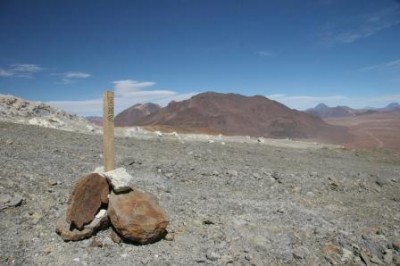
In less than a year, phase two of the Radiative Heating in Underexplored Bands Campaign, or RHUBC-II, begins in Chile’s Atacama Desert. Between August and October 2009, this campaign will use some of the latest infrared interferometer technologies to obtain water vapor measurements from the arid troposphere above the desert. A subset of baseline ARM instruments will be used to collect additional atmospheric data from above the study site. Attending to important logistics for this off-site campaign, ARM operations staff hit the road to coordinate arrangements for a staging facility for the campaign equipment, and to confirm the final site location with Chilean officials.
In August 2008, ARM operations staff traveled to Pagosa Springs, Colorado, to finalize arrangements with a contractor for the campaign’s staging facility. All the needed equipment and enclosures will be assembled and outfitted at the staging facility prior to shipment to Chile. A beta test will be conducted at the staging facility in April to ensure all ARM and guest instruments are integrated and operationally prepared to work in the high-altitude environment on Cerro Toco. The Pagosa Springs location was chosen for the staging facility to take advantage of existing capabilities there, as well as for its proximity to RHUBC-II campaign management and infrastructure design staff at Los Alamos National Laboratory.
This was followed by a trip to Santiago, Chile, in September to meet with the National Commission of Scientific and Technological Research (CONICYT) of the Republic of Chile. A significant milestone was achieved during this visit, as CONICYT approved ARM’s request for the RHUBC-II deployment location at an elevation of nearly 5400 meters on Cerro Toco. Additional meetings with potential subcontractors and collaborators both in Santiago and San Pedro de Atacama smoothed the way for infrastructure and logistics contracting in preparation for the site installation, planned for summer 2009. A drive to the site found the access road and surface conditions well worked and in good shape, minimizing the potential for environmental concerns during installation activities.
This campaign follows RHUBC-I, conducted in the spring of 2007 at the ARM North Slope of Alaska site in Barrow. While that campaign was limited to water vapor bands in the far-infrared portion of the electromagnetic spectrum (wavelengths less than 27 microns), the drier, low pressure conditions on Cerro Toco extend the maximum spectral range for RHUBC-II to nearly 43 microns. These drier conditions, coupled with the higher solar elevation angles, broaden the scope of RHUBC-II to cover essentially the entire spectrum, including the half-dozen strong water vapor bands in the infrared and near-infrared. The RHUBC-II data set is expected to greatly reduce uncertainties in treatment of middle and upper tropospheric moisture in the radiation calculation of global climate models.

